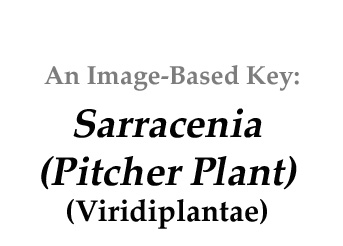|
Home / Anomalous_Items / Aquatic_Macrophytes / Emergent_Leaves / Sarracenia |
||||
|
|
||||
|
Click on images for larger format |
||||
Name derivation: |
||||
|
|
||||
Classification: |
||||
|
||||
|
||||
|
Perfect (bisexual) flowers develop in the Spring of the year that are showy, 3-10 cm diameter, with five brightly colored sepals and five petals, generally crimson red (S. purpurea), white, or yellow (other species). Carpels with a shield-shaped style remain long after the sepals and petals abscise. Self pollination does not occur, partly because of the flower morphology, so outcrossing by insect (bees) pollination is required for sexual reproduction. Various species hybridize successfully. Asexual reproduction occurs from rhizomes that produce new plants. |
||||
Insectivory: |
||||
|
||||
|
||||
Habitat: |
||||
|
The genus is protected because of its vulnerability to upland drainage. Surprisingly Serracenia is absent from Cook (1974), Fassett (1940), Godfrey and Wooten (1979), and Sculthorpe (1967); but is covered in Crow and Hellquist (2006). |
||||
References: |
||||
|
Crow, G.E. and C.B. Hellquist 2006. Aquatic and wetland plants of northeastern North America. A revised and enlarged edition of Norman C. Fassett;s A Manual of Aquatic Plants. University of Wisconsin Press. Fassett, N.C. 1940. A manual of aquatic plants. University of Wisconsin Press (405 pp). Godfrey, R.K. and J.W. Wooten 1979. Aquatic and wetland plants of southeastern United States. University of Georgia Press (712 pp). Sculthorpe, C.D. 1967. The biology of aquatic vascular plants. Edward Arnold, Publishers, London (610 pp). |
||||





